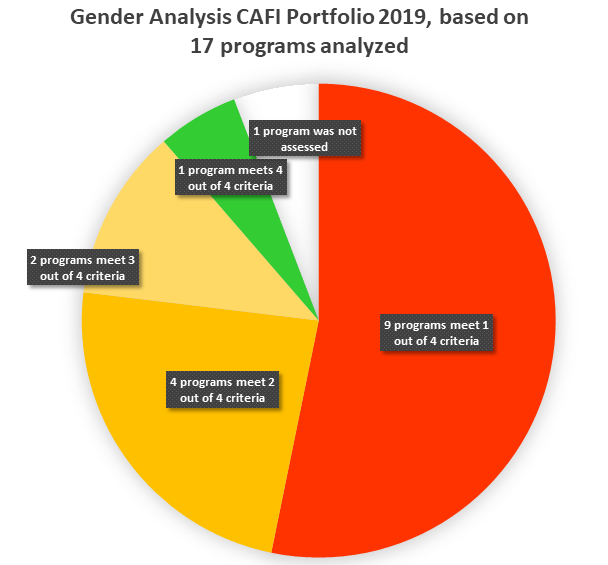14 August 2019
The CAFI’s 2018 annual report, downloadable here, was approved in July 2019 by the CAFI Executive Board.
2018 marked the three-year anniversary of CAFI.
Over these three years, CAFI has successfully raised ambitions for Central African forests, enhanced coordination between donors both at the international and national levels, disbursed more than 40% of its pledges, programmed more than 80% and helped mobilize additional contributions directly into its Fund or bilaterally.
In DRC, the country that has thus far received the most funding, concrete results and milestones of the Letter of Intent have been achieved with great national ownership, despite an historically complex political context. A third sub-tranche of US$ 42 M was approved to the DRC National REDD+ Fund to support the implementation of its portfolio and subsequent funding of the programs.
CAFI approved its first programme for Gabon (US$ 18.4 million), supported by the French Development Agency, to better plan and monitor the use of land and protect over 23 million hectares of tropical rainforest.
With the Republic of Congo, the CAFI Executive Board formally considered the country's National REDD+ Investment Framework as a good basis for negotiating a Letter of Intent. A funding amount of US$ 45 million through the CAFI Trust Fund, and an additional minimum amount of US$ 20 million in new and aligned bilateral funding, were subsequently agreed to in April 2019.
2018 was also marked by high level policy and technical dialogue enhanced with partner countries, and by the engagement of the European Union to commit 15 million euros to the CAFI Fund.
Events and communication efforts resulted in an exponential increase of social media exposure, notably on Twitter, maintaining CAFI’s position as a major player in the arena of climate, forest and development efforts in Central Africa. Partnerships grew and relationships with civil society improved, thanks notably to a roundtable organized in Geneva on the forest sector and to the first Annual Forum that took place in Oslo and focused on land-use planning.

The 2018 Annual report also assessed, for the first time, the gender sensitivity of all CAFI-funded investments (pie chart)
Based on the methodology developed by the UN-REDD programme and in an effort to promote gender equality by establishing a clear framework for identifying areas for mainstreaming gender and for monitoring progress, all programmes in the CAFI portfolio were assessed for their gender-responsiveness.
Based on 4 criteria - obtained from studying programme documents and budgets, annual reports, results frameworks - ratings of gender blindness, gender sensitivity or gender responsiveness were attributed.
While no programme was marked as gender blind, only one (6%) was deemed gender-responsive, with the vast majority deemed gender sensitive.
In its July 2019 meeting, the CAFI Executive Board declared its objective to double this percentage by end 2019 to reach at least 15% of CAFI-funded programmes assessed as “gender-responsive”
The Annual report also features analyses on the sectors that benefit from CAFI investments across DRC and Gabon.
Agriculture, supported by a sectoral programme as well as several provincial programmes, is the leading sector, concentrating 23% of investments, followed closely by land use planning (22%).
Of all sectors of CAFI’s results framework, mines is the only one that has not, to date, received targeted investments.
The relative importance of demography, at 1% in 2018, is expected to grow significantly in light of the 2019 approval of a USD 33 million programme in DRC.
The pie chart to your left shows CAFI's investments per outcome, calculated for programmes in Gabon and DRC based on the 1st tranche committed.


